FORT SURASEE, Thailand (Feb. 3, 2010) -The non-lethal weapons training during Cobra Gold 2010 gave American Soldiers and Royal Thai Army soldiers a chance to familiarize themselves with the various types of non-lethal weapons and when to use them.
"A non-lethal weapon is specifically designed to use non-fatal ammunition," said Larry Brown, the non-lethal weapons senior analyst for the U.S. Pacific Command, Camp H.M. Smith, Hawaii. "This class is for familiarization training and to make them aware of what is out there."
The Soldiers trained on a taser gun, a compressed air gun and a 12-gauge shot gun with various types of ammunition. For many Soldiers assigned to the 218th Maneuver Enhancement Brigade, South Carolina Army National Guard, this class is a refresher, but for the Thai Soldiers, the information was new and important.
Non-lethal force is becoming more popular and very effective. There are more types of non-lethal weapons now and Soldiers are finding new ways to use them. The compressed air gun can be mounted underneath the M-16 rifle. The air gun has a 15-round magazine which shoots a round filled with paint designed to break and splatter on impact. The weapon was originally designed for crowd control. The paint is used for marking.
"Soldiers have started using them at control points and on convoys," Brown said. "It can be used on vehicles or people and the paint can last for about a week. When they see it, people know they are being marked for something."
Everyone was able to practice on the various weapons systems but some of the 218th Soldiers also served as instructors for the Thai Soldiers.
"By teaching, the guys are able to get a more in depth knowledge of the weapon," said 1st Sgt. Don Evans from Company E, 1 Battalion 118th Infantry, Regiment, South Carolina Army National Guard.
According to Evans, the situations for using non-lethal force varies greatly from subduing an unarmed assailant or a suspect to civilian crowd control to protecting or recovering sensitive equipment.
"This training is important because it teaches how to know when to use less than lethal force," said Evans.
If used inappropriately, these non-lethal weapons can be fatal. This training stressed the importance of using the non lethal weapons properly and as they are intended. Soldiers are instructed to never take a head shot with any of these weapons.
"Any type of head shot is fatal, even with a rubber bullet," said Brown.
Less than lethal force has become a vital part of combat operations. American Soldiers overseas and Royal Thai Army soldiers are currently using these tactics to minimize collateral damage and to be able to apprehend suspects quickly.
"This is excellent training for both the Thai (Army) and our units because they are able to get hands-on with weapons they don't get to work with often," said 1st Lt. Jeff Blankenship, executive officer, Company C, 1st Bn. 118th Inf. Regt.
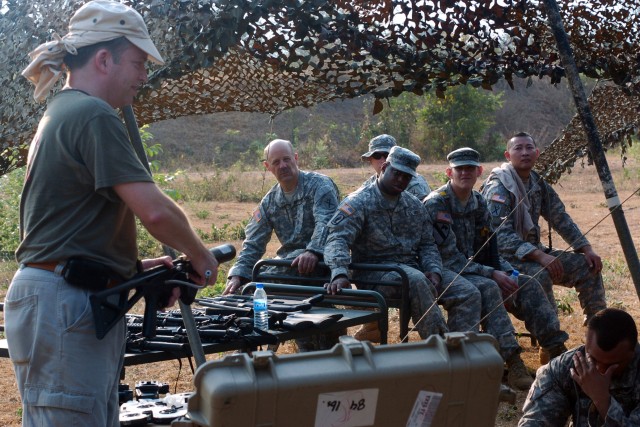
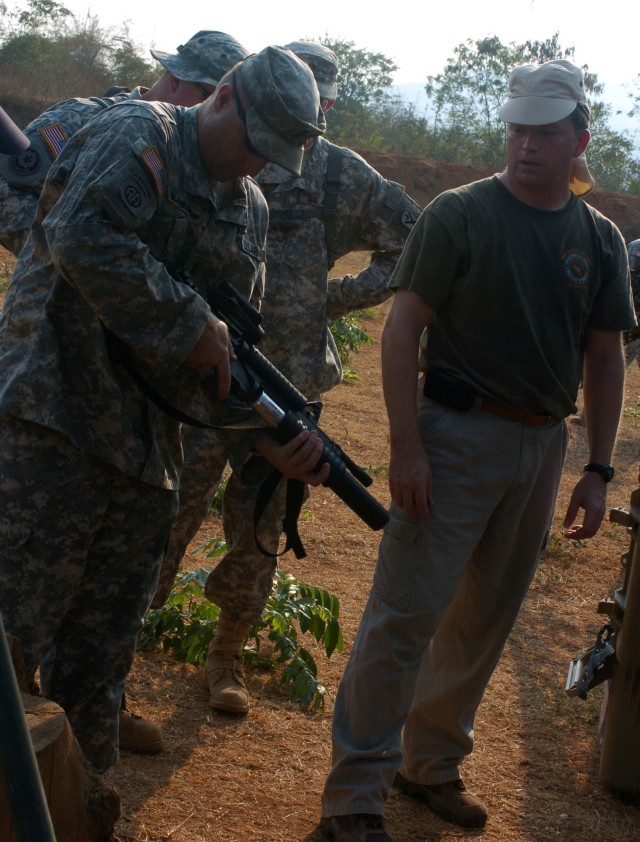
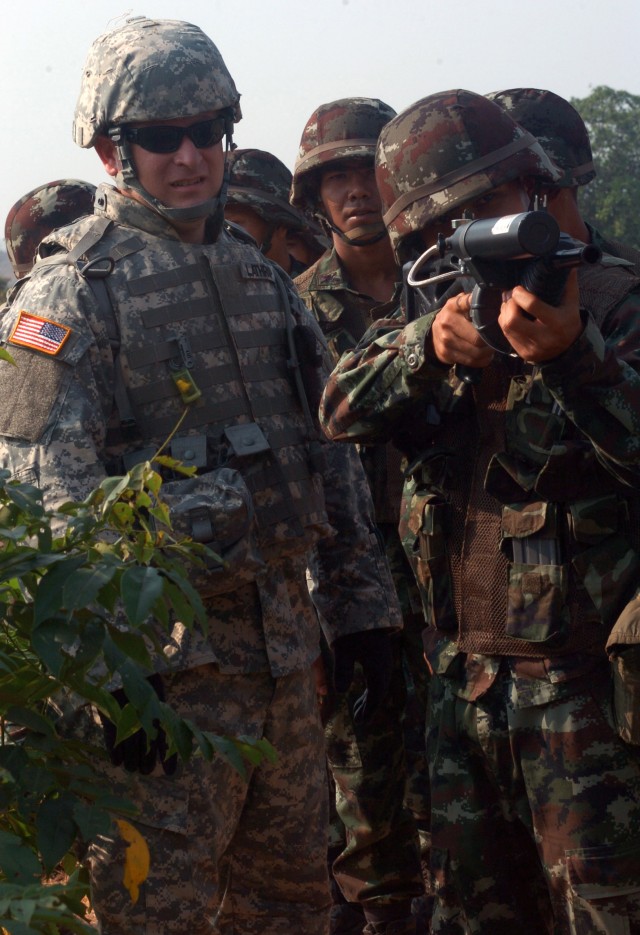
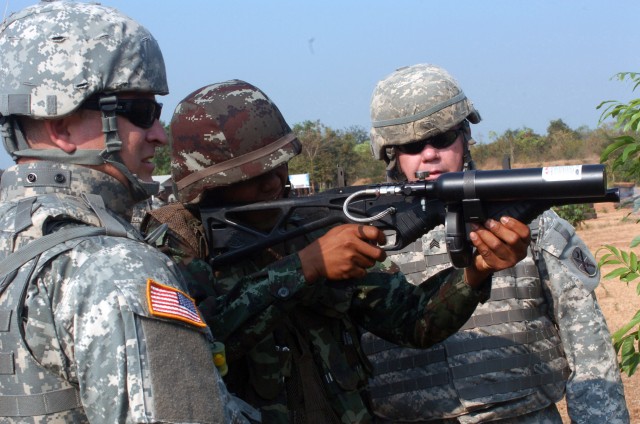
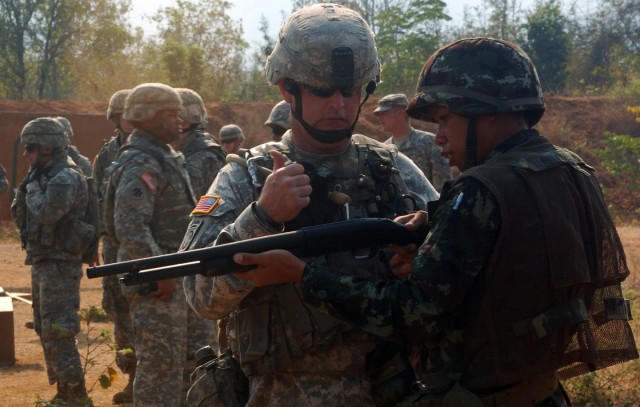


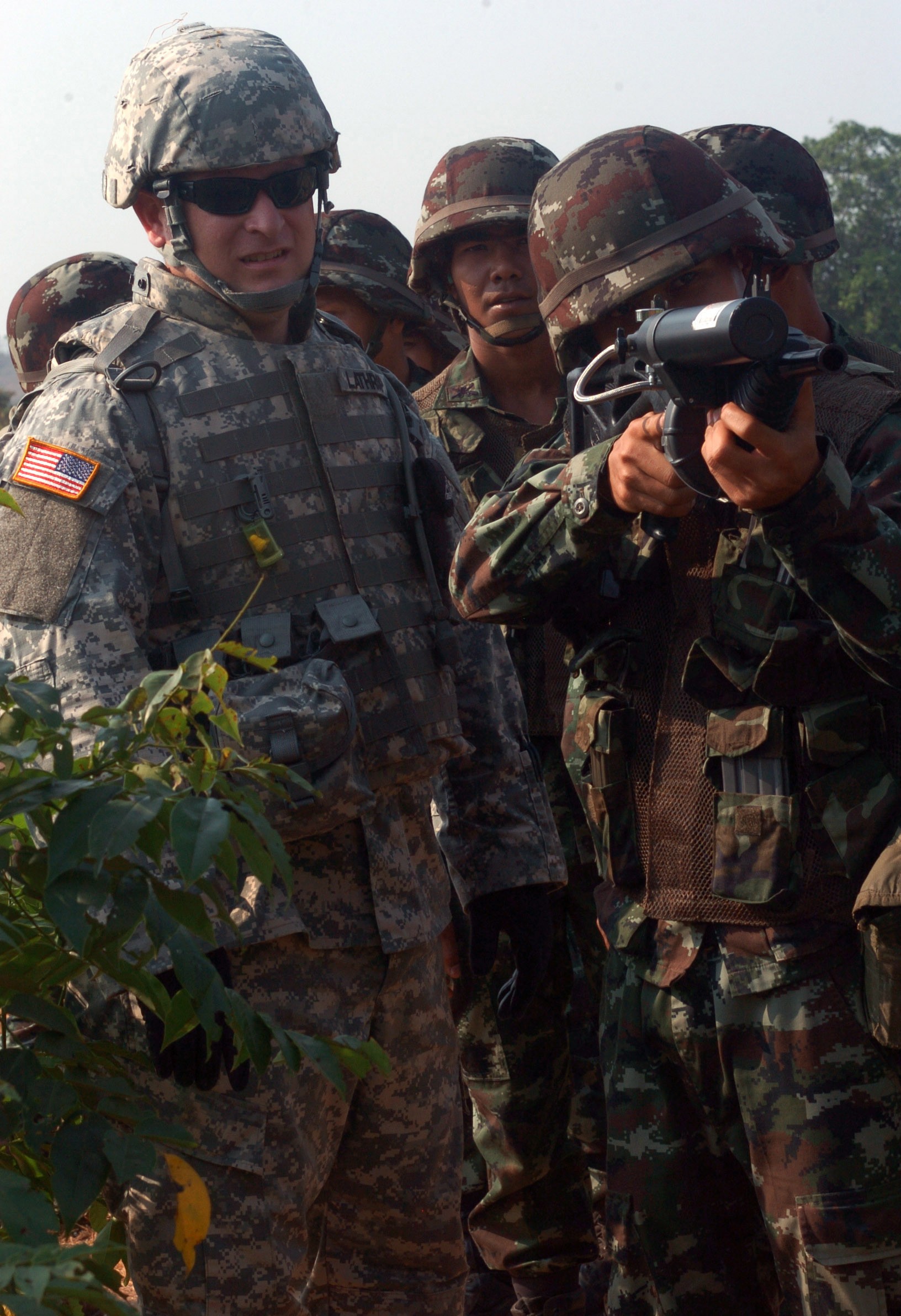
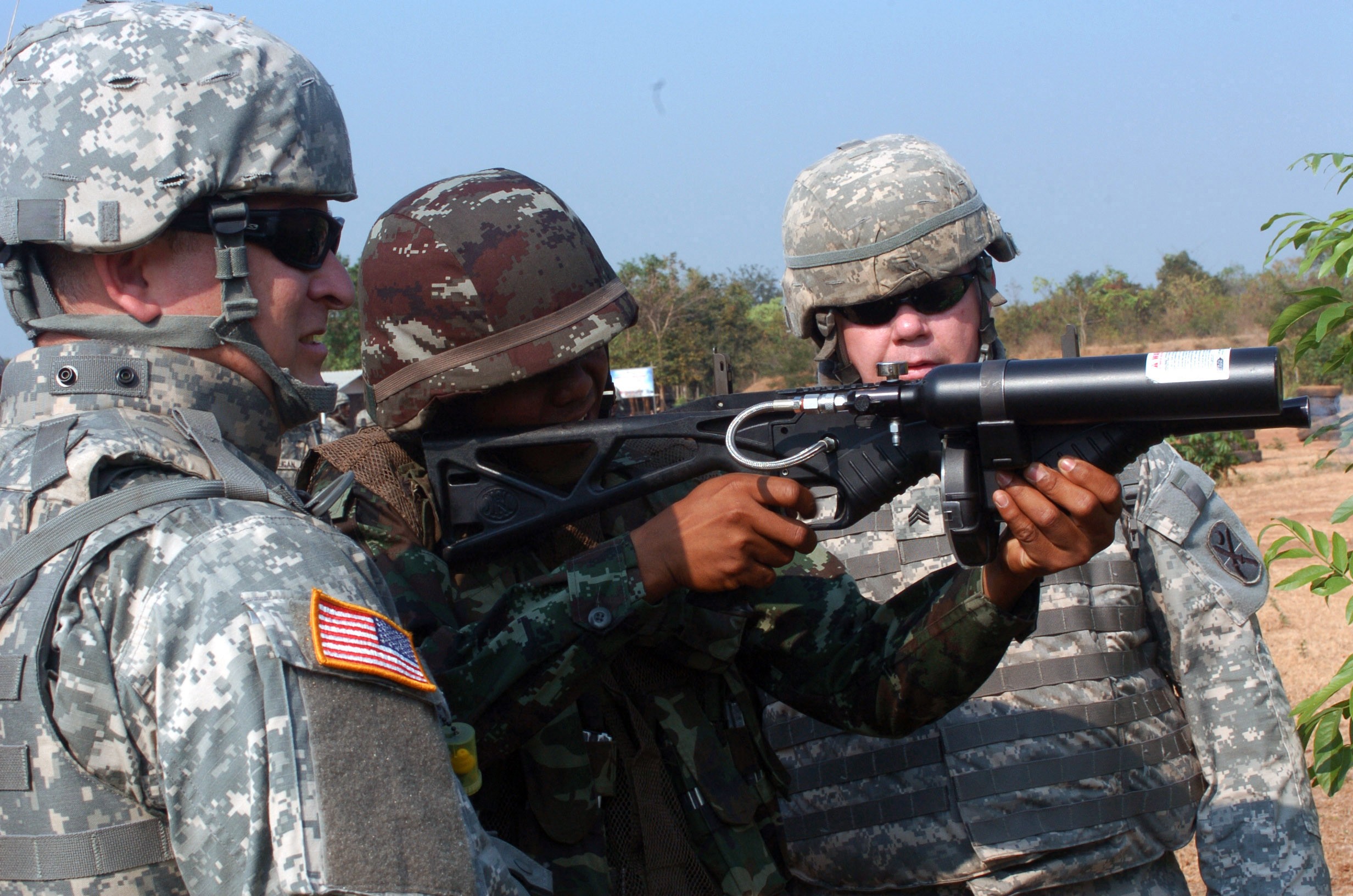
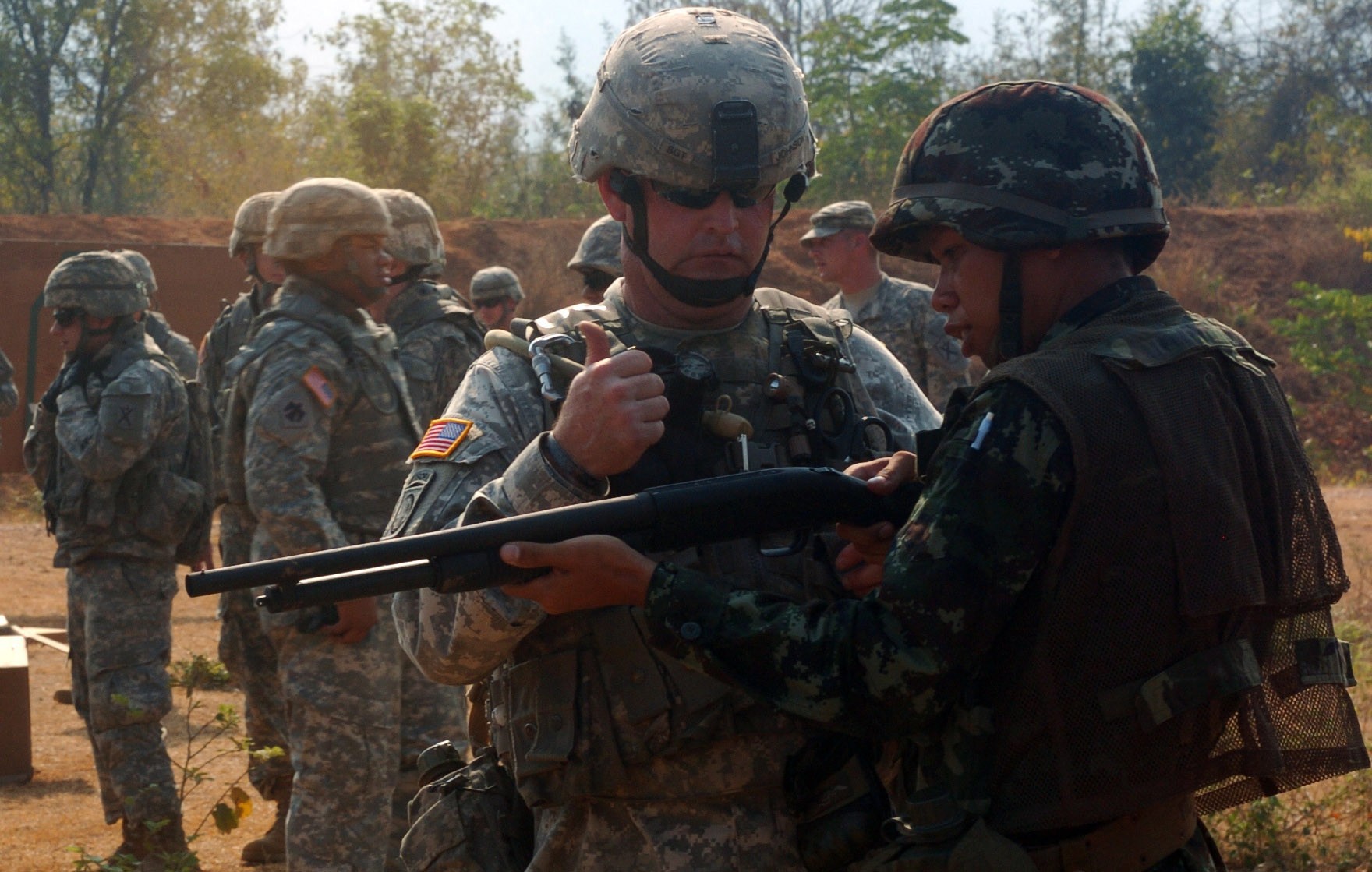
Social Sharing